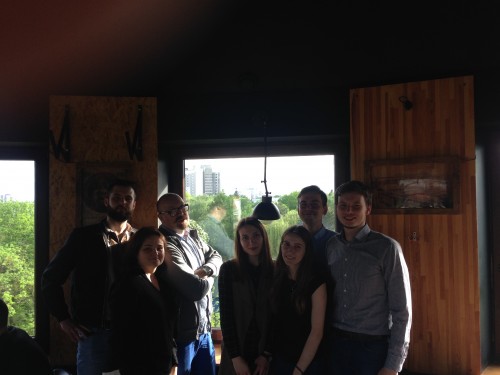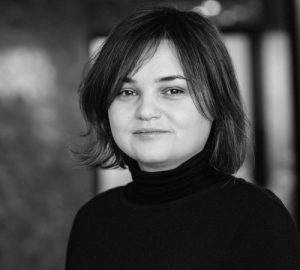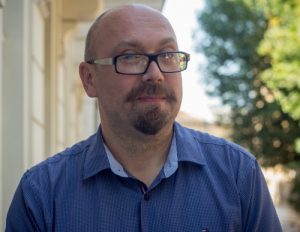
Cities and Culture in the Cities
-
- Course Duration:
- February-May 2019

Dr. Sofia Dyak and Bohdan Shumylovych delivered a seminar course for Master students and postgraduates of the Faculty of Humanities at UCU.
The course focused on the cultural and social history of the USSR and invited participants to explore Soviet experiences through the lens of urban history. During the spring semester of 2018 the participants of the seminar have focused on one of the largest Union Republics – Soviet Ukraine. Timewise, the course has covered almost five postwar decades and highlighted several periods of Soviet history while taking into account recent discussions between historians not only about when the "thaw" or the "stagnation" periods started and ended, but also about the very definitions and their timelines. For example, the seminar discussed when and how much has the Soviet "thaw" been liberal; has the "stagnation" been really stagnant; and what was the role of "perestroika" in finishing the Soviet project. Hence, we aimed at reconsidering such established divisions as "late Stalinism," "thaw," "stagnation," and "perestroika." However, our key topics were mainly about "reconstruction," "reloading", "rethinking," "localizing", "stabilizing" and "rebooting" the socialist project.
First, the seminar examined different experiences of exits from the war, peculiarities of the postwar urban reconstruction, emergence of new social and professional horizons and roles, unfolding of cultural wars and ideological rivalry in the context of "Cold war," integration of new territories acquired during the war into the Soviet system in general, and into specific republic in particular. This helped understanding how the Soviet project was "rebooted" after Stalin’s death, how the new political top leaders were shaped, and how the understanding of cities and Soviet culture has transformed in this context. Timelines of two postwar decades furthermore helped to trace the processes unleashed by the war, and also seeing the changes brought by reformatting and uncrowning of Stalin’s cult. Thus, the analysis focused on features typical for this period of time such as new urban planning and understanding of priorities, emphasis on new interpretations of revolutionary ideals of the early times of the Soviet project, and release of excessive clichés from Soviet culture.
Some sessions and texts examined closer how a rethinking of Socialism in the 1960s led to certain disillusionment among the intelligentsia. At the same time, conversations at the seminar have developed about the roles of local, regional, and conventional factors in further reconsideration of the Soviet project. In this respect, participants were asked to contemplate over the development of Socialist ideas of heritage, historical cities, and preservation of the cultural legacy of the past, which resulted in emerging new attitudes towards cultural revival and discussions on co-existence of old and new within the culture and urban space. Final sessions of the course tackled cultural reconsideration of what makes a socialist city and Soviet culture in terms of "post-Chernobyl" debate and recession of the Soviet economy. At the summary session, the joint discussion explored the legacies left behind the Soviet projects and experiences on the level of approaches, institutions, practices, and actors.
Workshop questions included, among others:

is a director of the Center for Urban History of East Central Europe in Lviv (Ukraine), an institution dealing with research and public history projects. Before taking the position of director in 2010, she was involved at the Center’s research projects, exhibitions and workshops, and summer programs dealing with preservation and oral history in western Ukraine. Dr Dyak defended her PhD thesis “(Re)imagined Cityscapes: Lviv and Wroclaw after 1944/45” at the Institute of Philosophy and Sociology of the Polish Academy of Sciences (Warsaw). She holds MA in history from the Central European University (Budapest) and BA from History Department of Lviv University. She was a research fellow at the Center for Holocaust and Genocide Studies in Amsterdam, the Institute for Human Sciences in Vienna, at the Institute for the Study of Human Rights at Columbia University, and at the Harvard Ukrainian Research Institute. Her research interests include post-war history of border cities, heritage and urban planning in socialist cities and their legacies. Another area of her work is public history. She taught seminars on public history for MA students at Ukrainian Catholic University and Kyiv-Mohyla University and also works as curator in memorial spaces and exhibition projects.

is a historian, coordinator of the Urban Media Archive at the Center for Urban History. He presents lectures, engages in the design of theme based exhibitions at the Center, researches popular culture of late socialism. Major focus of his work is media history and the history of television in East Central Europe and the USSR. He is interested in media art, visual studies, urban space practices, and urban creativity (creative city and creativity in the city).